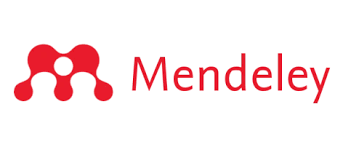Application of Fusion Technique with ImageJ Stacks Feature for Brain Tumor MRI Image Optimization
DOI:
https://doi.org/10.59888/ajosh.v2i11.359Keywords:
MRI Brain Tumor;, Fusion;, Stacks ImageJ;, Axial T2-Flair;, Axial T1-GD (T1-weighted post-contrast)Abstract
Fusion techniques on MRI for brain tumors can provide comprehensive visualization by combining Axial T2-Flair and Axial T1-GD (T1-weighted post-contrast) sequence images. Fusion MRI in brain tumors is able to clearly display the location, size and characteristics of the tumor. However, not all institutions can install such additional fusion software due to significant additional costs. Therefore, this study aims to prove that the Stacks feature on ImageJ as an alternative can be optimal in visualizing brain tumor image information through MRI fusion techniques. This study used 17 image samples with a quasi experimental design post test only without control group design to compare three analysis methods, namely fusion maximum intensity, minimum intensity and average intensity so that the most suitable projection can be determined. The evaluation of image quality was carried out through a histogram which was then analyzed with a crucal-wallis and the Mann Whitney u test, while the analysis of pathological information used a crucal-wallis, followed by a post hoc test and continued with Mann Whitney u for further analysis. The results show that the stacks feature on ImageJ can be used in the application of fusion techniques so that it will improve the contrast and sharpness of MRI images, especially in areas with high tumor activity. MRI images of brain tumors with maximum fusion intensity produced images with the highest average gray level and the best pathological information. This projection is more optimal than the minimum intensity and average intensity because it provides a more detailed and clear visualization of brain tumors.
Published
Issue
Section
License
Copyright (c) 2024 Nur Wahyu Tajuddin, Bambang Satoto, Rini Indrati, Donny Kristanto Mulyantoro, Darmini Darmini, Gatot Murti Wibowo

This work is licensed under a Creative Commons Attribution-ShareAlike 4.0 International License.
Authors who publish with this journal agree to the following terms:
- Authors retain copyright and grant the journal right of first publication with the work simultaneously licensed under a Creative Commons Attribution-ShareAlike 4.0 International. that allows others to share the work with an acknowledgement of the work's authorship and initial publication in this journal.
- Authors are able to enter into separate, additional contractual arrangements for the non-exclusive distribution of the journal's published version of the work (e.g., post it to an institutional repository or publish it in a book), with an acknowledgement of its initial publication in this journal.
- Authors are permitted and encouraged to post their work online (e.g., in institutional repositories or on their website) prior to and during the submission process, as it can lead to productive exchanges, as well as earlier and greater citation of published work.










